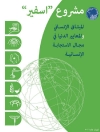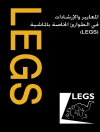Contrary to optimistic visions of a free internet for all, the problem of the ‘digital divide’ – the disparity between those with access to internet technology and those without – has persisted for close to twenty-five years.
In this textbook, Jan van Dijk considers the state of digital inequality and what we can do to tackle it. Through an accessible framework based on empirical research, he explores the motivations and challenges of seeking access and the development of requisite digital skills. He addresses key questions such as: Does digital inequality reduce or reinforce existing, traditional inequalities? Does it create new, previously unknown social inequalities? While digital inequality affects all aspects of society and the problem is here to stay, Van Dijk outlines policies we can put in place to mitigate it.
The Digital Divide is required reading for students and scholars of media, communication, sociology, and related disciplines, as well as for policymakers.
表中的内容
Acknowledgements
1 What is the Digital Divide?
2 Research and Theory of the Digital Divide
3 Motivation and Attitude
4 Physical Access
5 Digital and 21st-Century Skills
6 Usage Inequality
7 Outcomes
8 Social and Digital Inequality
9 Solutions to Soften the Digital Divide
References
Index
关于作者
Jan van Dijk is Professor of Communication Science and Sociology of the Information Society at the University of Twente.












